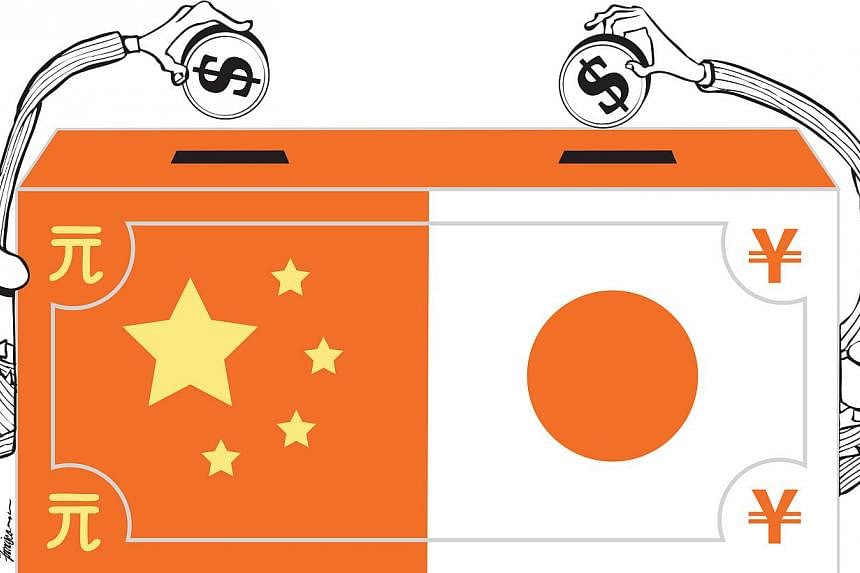With the Articles of Agreement the Asian Infrastructure Investment Bank (AIIB) "finalised" at the latest meeting of chief negotiators in Singapore, the AIIB is moving from a Chinese initiative to a China-led regional institution with global membership.
The Japan-led Asian Development Bank (ADB) is the institution that is most similar to the AIIB in name, geographic coverage and likely structure.
Yet two differences within this overarching similarity exemplify the very different understandings of Asia held in Beijing and Tokyo and the very different views of Japan's place within Asia expressed by the ADB and China's place in Asia expressed by the AIIB.
On the similarity side, both the ADB in 1966 and AIIB in 2015 are responses by Asia's leading economic power of the time to a twin belief.
First, that its own developmental success has defining characteristics that can be transferred to others in Asia.
Second, that the existing intergovernmental development banks operating in Asia have been dominated by other powers, not giving Asia's leading power enough say, and not focusing enough on the keys to developmental success.
Given the common regional focus on Asia and the global nature of finance, both the ADB and AIIB have memberships bifurcated between regional and non-regional members in ADB parlance, and Asian and non- Asian members in the emerging AIIB lexicon.
Of the 67 ADB members, 19 are classified as non-regional.
Of the 57 prospective founding members of the AIIB, 20 are classified as non-Asian. Moreover, in both institutions, non-regional members get or will likely get less say than the size of their economies suggest.
Seven of the 10 positions on the ADB board of directors are reserved for regional members while it is reported that nine of the AIIB's 12 directors will come from Asian members.
On the side of contrast, modern Japan, as an archipelagic power on the North Pacific periphery of the Eurasian landmass, has a North-South maritime understanding of Asia.
China, as a vast land power with an inland capital, has an East-West continental understanding of Asia.
In the ADB, this Japanese view is reflected by the inclusion of the Pacific Islands states as regional members.
These small and micro island states make up 13 of the 48 regional members.
None is a prospective founding member of the AIIB.
In the AIIB, the Chinese view of Asia is represented by the fact that the second-largest Asian sub-group of AIIB prospective founding members, after the South-east Asian 10, are the nine Middle Eastern states.
None of these nine is an ADB member, regional or non-regional.
Post-war Japan's Pacific nature and close relationship with the US have led Japan to pay particular heed to the United States' interests and place in Asia and, to a lesser extent, that of Canada.
While both North American states are non-regional members of the ADB, their role and share in the bank are significantly larger than the European non-regional members'. The US has the same voting weight and shareholding in the ADB as its founder, Japan.
Canada is the second-largest non-regional member with a share larger than that of France and Britain combined.
In total, non-regional members account for over 30 per cent of the ADB's shareholdings.
China's proposal for a 75 per cent versus 25 per cent split in the AIIB between Asian and non-Asian members would provide the US and Canada much smaller shares than they hold in the ADB.
The proposed 75-25 per cent split would give China alone a larger stake in the AIIB than all non-Asian members combined.
If the US, the world's largest and most advanced economy, were to join under this formula, it would need to be satisfied with the largest national share of this small minority stake.
Not surprisingly, then, both the US and Canada chose not to become prospective founding members of the AIIB.
The Japanese view of Asia as reflected in the ADB is a very different one to the Chinese view reflected in the AIIB so far.
Japan's view gives itself a much smaller role in Asia than China's view gives China.
Japan's share in the ADB is less than half that of China's likely share in the AIIB.
The ADB is headquartered in Manila, a full 3,000km away from Tokyo.
The AIIB will be headquartered in Beijing.
Post-war Japan's Pacificoriented view of Asia has welcomed the US as the major Pacific and global power worthy of equal status in Asia to Japan.
This is in line with the very close US-Japan bilateral relationship and integrates Asia with the US-led global order.
China's continental view of Asia is equally congruent with the nature of the US-China bilateral relationship, one that is increasingly defined by strategic competition.
This view of Asia seeks to reduce the role and position of the United States in Asia and to challenge the prevailing US-led global order.
Time will tell which view of Asia predominates and what that will mean for Asia's place in the global order.
The writer is a senior fellow at the Institute of Southeast Asian Studies.

